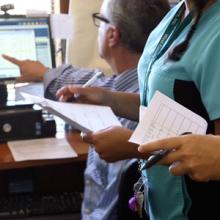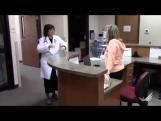What is the challenge?
Many patients receive referrals to different providers and services—including community resources, specialists, labs, emergency departments, and hospitals. When referrals don’t get completed or fail to provide the information sought, it upsets patients and frustrates providers. Referrals can be inefficient, ineffective, and even dangerous unless the process is well coordinated, with all parties communicating and sharing timely information.
What needs to change?
Primary care practices must be the hub for all the services their patients receive. This means:
- Be accountable for ensuring that all referrals meet the time sensitive needs of the patients and their providers. This requires developing a trusted referral network and staff roles, workflows, and information systems to track and manage referrals.
- Support patients by making sure they get the information and care they need. This includes helping them find and schedule services, as well as tracking progress and results.
- Establish relationships with different providers and service organizations in the community to build trust and develop shared expectations for referrals.
- Develop connections with other providers and organizations who care for your patients to facilitate interaction and the timely flow of patient information.
What do we gain by making these changes?
By making these changes, practices help patients get the services they need when they need them, and ensure that providers get the information they need when they need it—at the lowest cost to the patient and the health system. These changes are important steps toward improving patient outcomes while the work becomes more efficient and less stressful.
- Select and train staff to track and manage referrals.
Many high-performing practices train a member of their front desk or administrative team to become a “referral manager” who orchestrates and tracks the progress and outcomes of referrals. Referral managers should be good communicators who work well with patients and providers—both inside and outside the practice. They should also be familiar with the practice’s information systems and time expectations for various referrals, and be willing to take persistent action to facilitate and track referrals.
- Reach out to specialists, hospitals, and community service agencies.
Start by identifying the specialists, hospitals, and community service agencies that the practice and its patients use and value the most. Then initiate conversations with them to strengthen the relationship and better understand each other’s preferences and expectations about which patients to refer, how to make appointments, what information to send, and care arrangements after the initial consultation. It’s sometimes helpful to develop written agreements. Some LEAP sites, especially those in more rural settings, were able to bring consulting services to their patients by either having specialists see patients in the primary care clinic or obtaining specialist input through telehealth technology.
- Create workflows to ensure the referral loop gets closed.
The referral loop is not closed until the patient has the services they need and the referring practice has the information they sought. Referral workflows should begin by ensuring that patients understand the reason for referral, and are willing to go. The practice should then route all referrals through the referral manager so that they can be tracked. As part of this process, the referral manager helps patients make and keep appointments and works with referring providers and consultants to ensure the timely two-way flow of information needed to complete the referral process. Practice policies should designate a process for addressing patient and/or provider barriers to loop closing.
- Develop standard ways of exchanging referral information.
The referral manager is responsible for managing the flow of information back and forth between the referring practice and the specialist or community agency. The first step is to develop or select a system for communicating important referral information consistently and efficiently. The system can be low-tech or high-tech—what matters most is that it meets the needs of both parties. Helpful approaches include using standardized forms, a shared electronic health record, or e-referral software.
Case summariesVignettes, profiles and testimonial videos
ToolkitsImplementation guides and other documents with extensive resources included
Publications
Video
Role featuresJob descriptions, career ladders and other HR materials
Clinical protocolStanding orders, risk stratification forms and hospital transition protocols
WorkflowTemplates, flow sheets and mapping aids
If you have a question about the improvements, action steps, or tools & resources in this module please let us know. We're here to help. And if we can't answer your question, we can probably connect you with someone who can.













